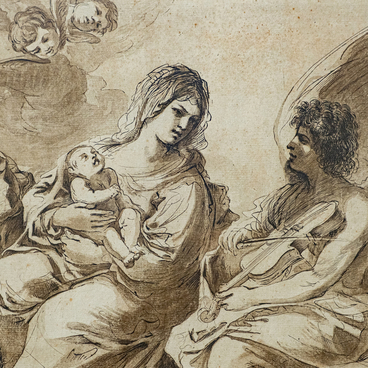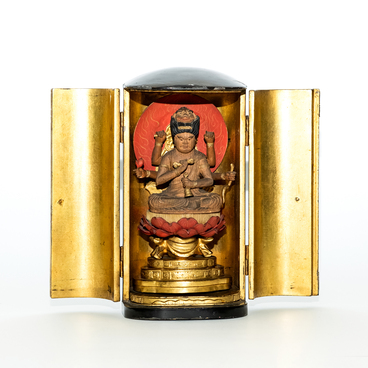The collection of the Sakha Republic National Art Museum features a credenza cabinet — a type of furniture originating from an altar church cabinet designed to store relics.
Credenza cabinets (from Latin credenza — “faith”) were common in Germany and France in the 15th–17th centuries. By its design, the museum credenza cabinet resembles a chest raised on high legs above a solid pedestal base. In the old days, such cabinets served as display platforms for beautiful dishware. Cabinets were made of precious wood. Over time, the cabinet received the name “dressoir.” Its Gothic chest design on high legs with a solid pedestal base remained the same, but the facade became abundantly decorated with relief carvings. The inside of such a cabinet is equipped with one shelf, where silver objects were usually stored, while dishes were displayed in the deep lower niche. In the second half of the 19th century, the credenza cabinet, decorated with carvings in the Neo-Renaissance style, came back into fashion, appearing in the drawing rooms of rich houses.
The exhibit is made in the style of French furniture of the Early Renaissance characteristic of the reign of Francis I in the first quarter of the 16th century. During that period, the medieval form of furniture blended in with the Renaissance decorative patterns. The material of the item is solid oak — wood with a dense texture, which eventually acquired a beautiful dark brown color. The piece has a pentagonal shape on a carved base, a stepped cornice, and two high-profiled columns on the sides. On the back, the support is designed as a solid wall decorated with panels adorned with flat decorative patterns imitating folded parchment (linen folds).
In the upper part, the museum’s art piece is
divided into separate panels; the front side serves as a door, under which
there is a drawer. The constructive vertical parts of the facade, forming the
faces, end at the bottom with chiseled hanging weights — everything is built on
the beauty of proportions, purity of contours, and clarity of the silhouette.
The decor of the cabinet is emotionally expressive and plastically complex. It
has features of the Renaissance style — bizarre decorative grotesques inspired
by the motifs of ancient Roman wall paintings. The museum’s credenza, with its
well-proportioned design and carved decoration, closely resembles its
16th-century French prototypes.













